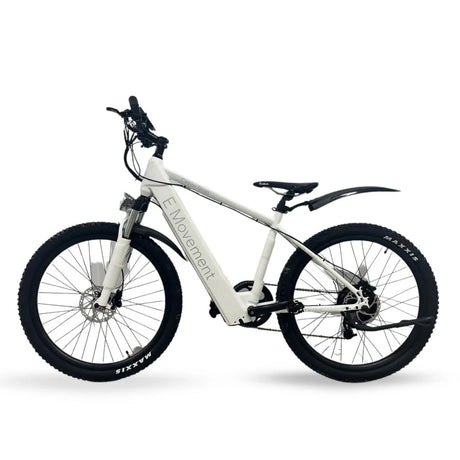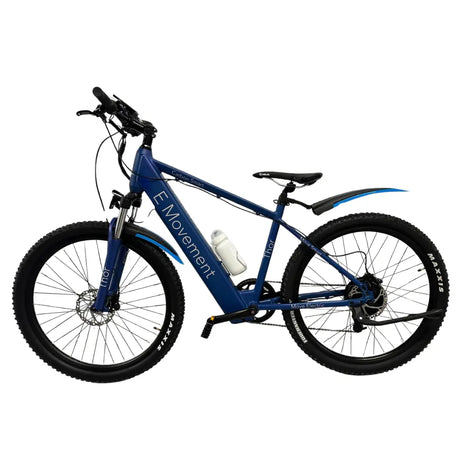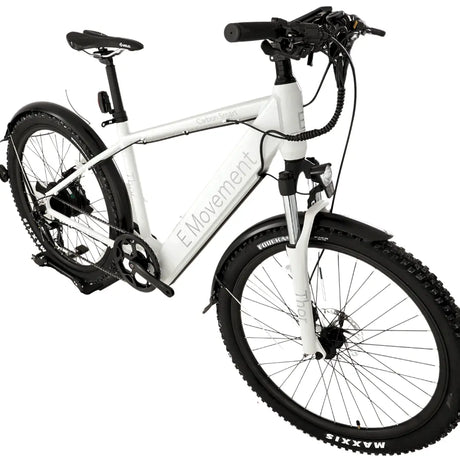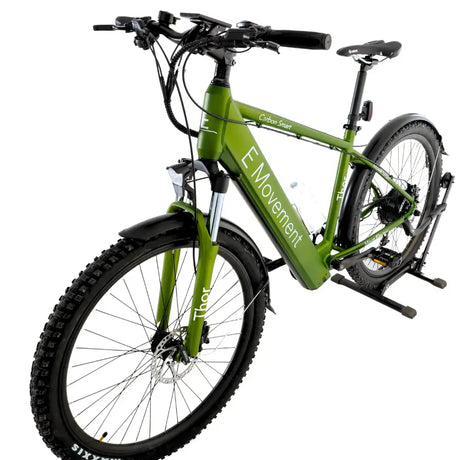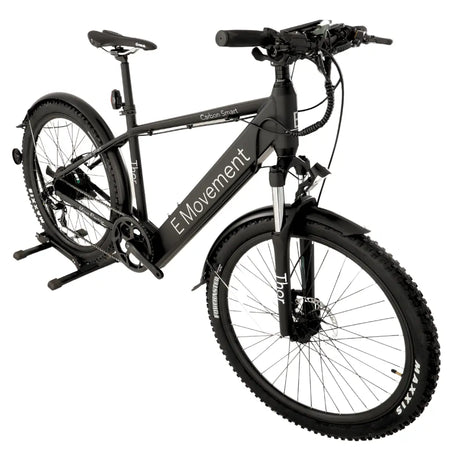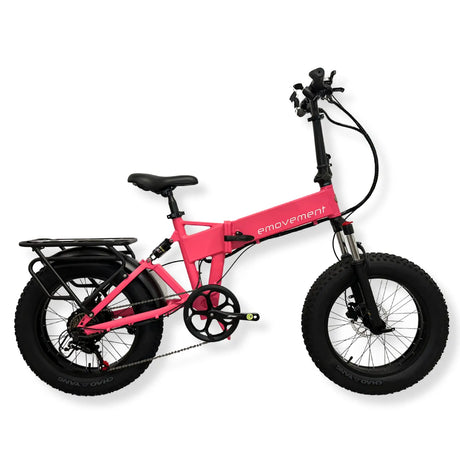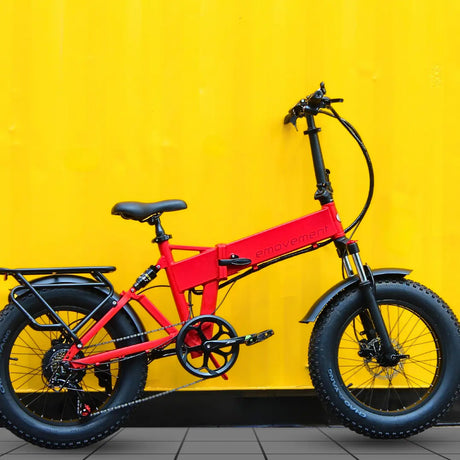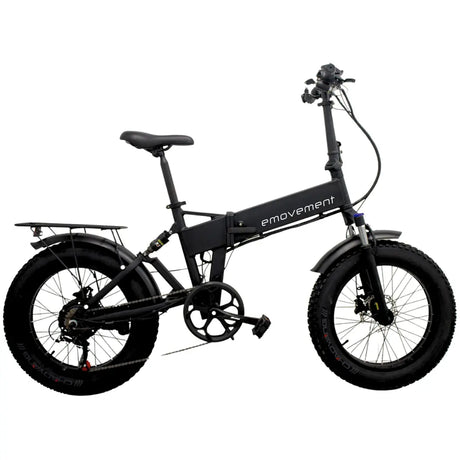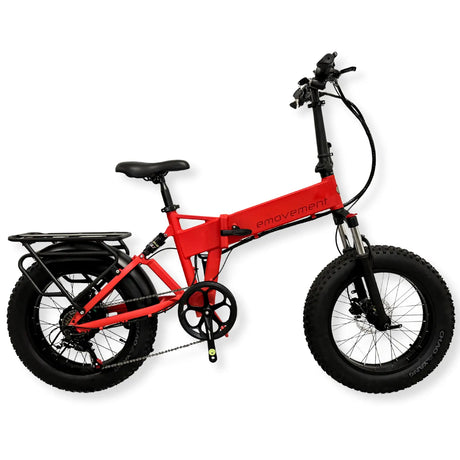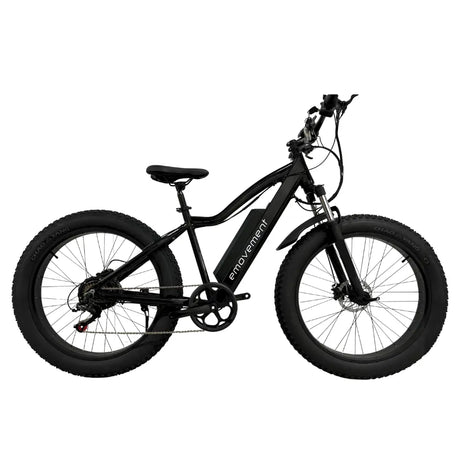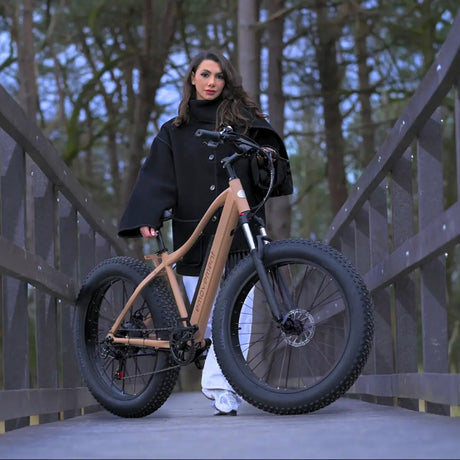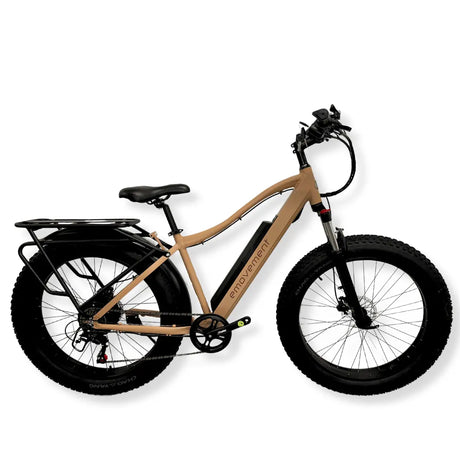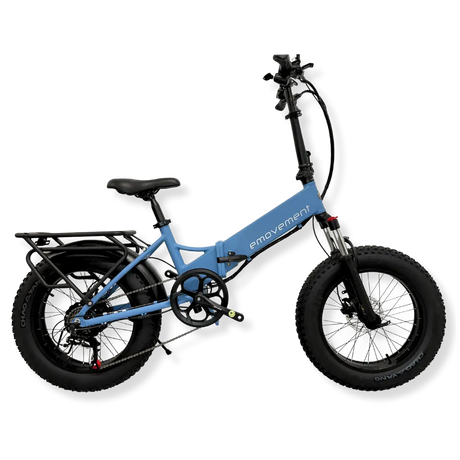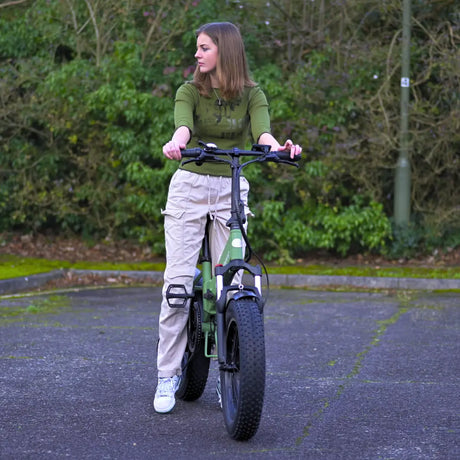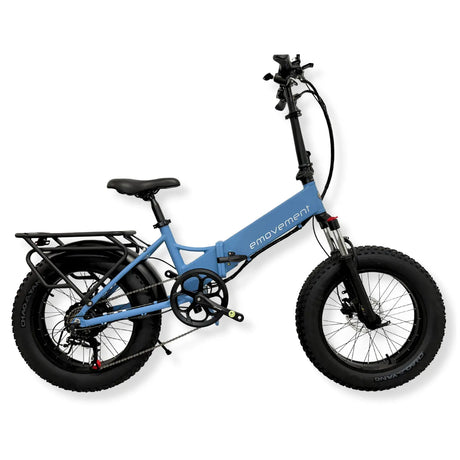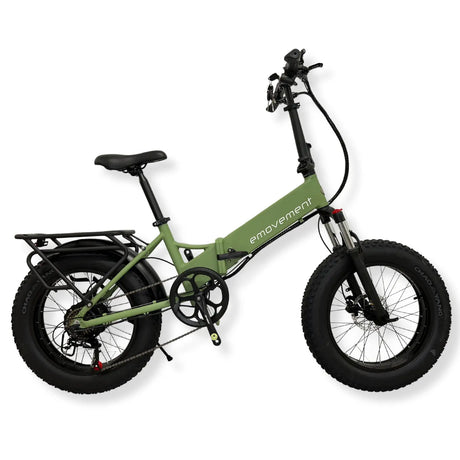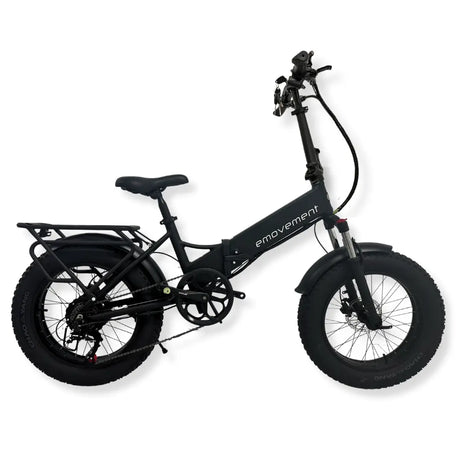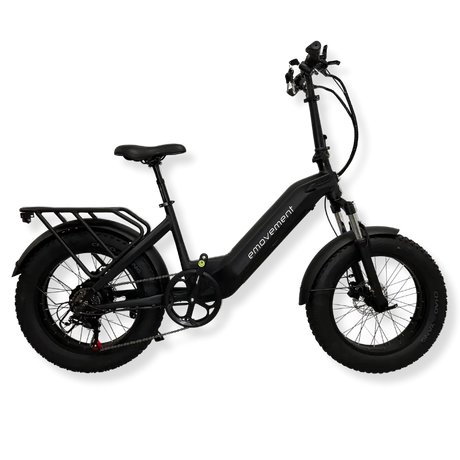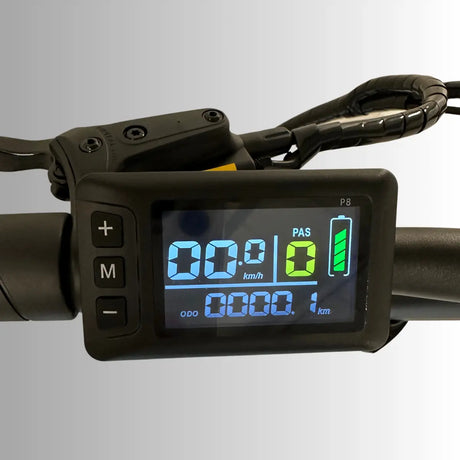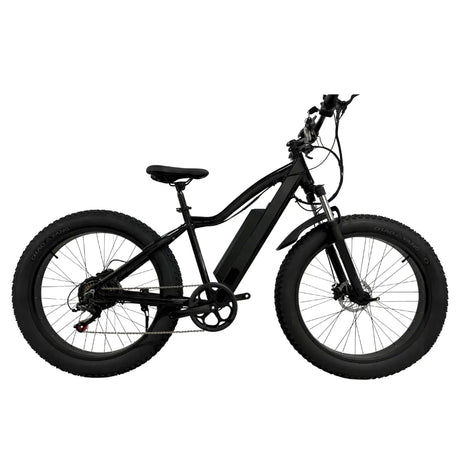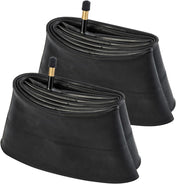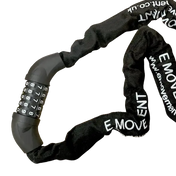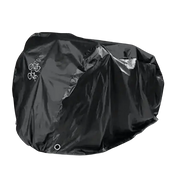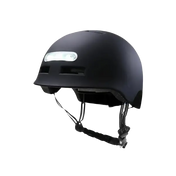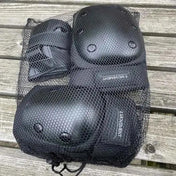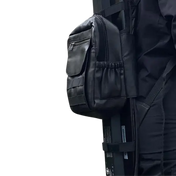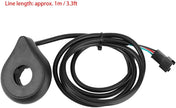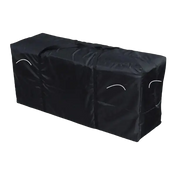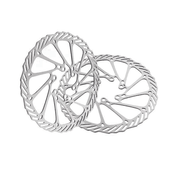Inside this Article:
- 1. Preparing Your Electric Bike for Winter
- 2. Checking Your Electric Bike
- 2.1. Battery Inspection and Maintenance
- 2.2. Tyre Examination and Maintenance
- 2.3. Lubricating Moving Parts
- 3. Cleaning and Protecting Your Electric Bike
- 3.1. Proper Cleaning Techniques
- 3.2. Protecting Electrical Components
- 3.3. Storing Your Battery Safely
- 4. Dressing for Winter Riding
- 5. Riding Your Electric Bike in Winter
- 6. Charging and Battery Care
- 7. Storing Your Electric Bike
- 8. Creating a Winter Maintenance Schedule
- Conclusion
- FAQs
With winter comes unique challenges for electric bike owners. Whether riding on snow-laden roads or taking care of the battery in freezing temperatures, preparing your e-bike for cold weather is essential for its longevity and your safety and comfort. And this task involves more than just regular maintenance. You have to consider factors such as proper lubrication, cleaning, and the selection of suitable accessories for cold and snowy conditions.
If you wish to be well-equipped for the colder months and have a safe, enjoyable winter riding experience, let us help. We’ll detail how to winterise your electric bike and the essentials of e-bike maintenance and storage in the freezing winter months.

1. Preparing Your Electric Bike for Winter
Winter riding brings a whole new set of conditions that your electric bike needs to be ready for. Let’s first dive into some crucial steps to get your bike winter-ready:
1.1. Understanding the Impact of Cold Weather
Before you start winterizing your electric bike, we recommend understanding how cold weather affects its components. The most significant impact is on the battery; cold temperatures can reduce battery efficiency and capacity. This means that, unlike in warmer months, your e-bike might not hold its charge well in winter .
Additionally, metal parts can contract in cold weather, potentially affecting the bike’s alignment and the efficiency of moving parts . When you are aware of such problems, you can take much better care of your bike in harsh winter conditions.
1.2. Gathering Essential Tools and Materials
To effectively winterise your electric bike, you need the right tools and materials:
- Battery Charger and Tester: To ensure your battery is adequately charged and functioning well, make sure you invest in a high-quality battery charger and tester.
- Lubricants: Specialised lubricants for cold weather will keep moving parts like chains and gears running smoothly.
- Cleaning Supplies: Regular cleaning is vital in winter to remove road salt and grime.
- Tyre Pump and Pressure Gauge: Proper tyre inflation is crucial for safe winter riding.
- Insulated Covers: Use insulated covers for the battery and LCD display to protect them from extreme cold.
- Tyre Chains or Winter Tyres : If you’re riding in snowy conditions, tyre chains or winter tyres are essential for improved traction.
- Toolkit: Stock on basic tools for adjusting brakes , gears, and other components.
- Storage Cover: For those who store their bike outdoors or in a cold garage, it’s a good idea to purchase a storage cover.
2. Checking Your Electric Bike
Routine inspection and maintenance of your electric bike are extremely important to guarantee it’s ready to handle the winter conditions. A well-checked e-bicycle can offer a safer, more reliable ride in cold weather.
2.1. Battery Inspection and Maintenance
Keeping the e-bike’s battery in top condition is one of the most crucial steps of smooth and comfortable winter e-biking.
2.1.1. Battery Inspection and Care:
Start with a detailed inspection of the battery, looking for any physical damage, such as cracks, and checking for loose connections. Even minor issues can become significant problems in cold weather and affect the bike’s performance.
2.1.2. Charge Level
Maintain a full charge on your battery, particularly before long-term storage. Be mindful not to overcharge, as this can lead to reduced battery life. Regular charging helps maintain battery health, especially in colder temperatures. And since every battery type is affected by ambient temperature, make it a habit to discharge your battery when the temperature is higher.
Battery power can decrease by one-third below freezing temperatures , so continuous driving and reduction after a single charge are common. We recommend using full pedal assistance in the winter to extend your e-bike’s battery use and allow you to exercise without your legs and feet getting cold.
2.1.3. Storage Temperature
Store the battery in a temperature-controlled environment, away from extreme cold or heat. If you’re not going to use your e-bike for a long time, make sure to charge the battery up to 40-60% and regularly recharge it every one to two months . Proper storage temperature is vital for preserving the battery’s efficiency and preventing damage due to cold stress.
Your electric bike’s function will be restored naturally when the temperature rises above 20°C. You should also not park your bicycle for a long time in the rain or snow because this can lead to moisture reaching the electric parts. Components such as the regulator, wire circuit or motor hub might get flooded, leading to a short circuit and, consequently, vehicle damage.
2.1.4. Regular Testing
Use a battery tester periodically to monitor the health of your battery. Consistent testing can alert you to potential issues before they become major, ensuring reliable performance. In general, pay attention to the following tasks:
- The shorter the battery discharge depth time, the longer the battery life. This means that the user should develop a good charging habit no matter the size of the battery.
- Discharge damages the battery to a certain extent, so use pedals when you’re climbing up and down terrains.
- Storing the battery for a long time entails charging it fully and regularly recharging it (typically every 1-2 months).
2.2. Tyre Examination and Maintenance
Safe tyres are equivalent to safe rides as they help maintain grip and stability on icy roads:
2.2.1. Tyre Pressure
Regularly check and adjust the tyre pressure according to manufacturer guidelines, as cold air can cause a decrease in pressure. Properly inflated tyres are crucial for maintaining good traction and efficiency in winter conditions, allowing riders to avoid accidents and falls.
2.2.2. Tread Depth
Examine the tread depth of your tyres to make sure they are adequate for winter terrain. Consider specialised winter tyres with deeper treads for improved grip in snowy or icy conditions, like fat or studded tyres that help maintain balance.
While studded tyres offer better traction on icy sidewalks or ploughed roads, fat tyre bikes are the way to go if you’re expected to navigate deeper and softer snow packs even though they’re more expensive.
2.2.3. Condition Check
Inspect the tyres for wear and tear, such as cracks or splits. Timely replacement of worn-out tyres is key to ensuring safety and optimal performance in harsh winter weather. Additionally, start your bike without motor support when you’re initially heading out to keep the tyres from spinning in the snow.
2.3. Lubricating Moving Parts
Since proper lubrication of moving parts results in a smooth ride in cold weather, you should do the following:
- Select the Right Lubricant: Choose a lubricant specifically designed for cold weather to prevent thickening at lower temperatures. This will result in smooth movement and protect your moving parts.
- Application: You should proceed by applying the lubricant to all moving parts, including the chain and gears. This helps prevent rust and ensures the parts move freely, which is particularly important in cold, potentially damp conditions. Use wet lube in the winter and make sure it dries properly on the chain to avoid the accumulation of dust when you go cycling.
- Regular Checks: Monitor and reapply lubricant as needed throughout the winter. Regular maintenance of these parts is paramount for consistent performance and to prevent long-term damage from winter elements.

3. Cleaning and Protecting Your Electric Bike
Keeping your electric bike clean and well-protected during the winter months can prevent long-term damage from road salt and moisture. If you want to brave winter’s wrath, you’ll need more than just a sturdy ride and that’s where meticulous care of your electric bike comes in:
3.1. Proper Cleaning Techniques
Regular cleaning will preserve your bike’s integrity. Here’s what you need to do:
- Use the Right Products: Opt for cleaners specifically designed for electric bikes. Steer clear of harsh chemicals that can harm electrical systems or the bike’s paint.
- Focus on Key Areas: Prioritise cleaning the chain, gears, and wheels , as this is where dirt tends to accumulate the most. Employ a soft brush and a mild cleaner to gently dislodge dirt and debris.
- Dry Thoroughly: Post-cleaning, drying is crucial. Use a soft cloth to carefully and thoroughly dry the bike, paying extra attention to metallic parts and electronic areas to prevent corrosion and short circuits.
3.2. Protecting Electrical Components
An e-bike’s electrical system is its lifeline that demands vigilant protection in the winter. For this reason, you should:
- Inspect and Clean Contacts: Regular cleaning of battery contacts and electrical connections prevents build-up and corrosion. Use a dry, soft cloth for gentle cleaning. You also need to lubricate the chain and then rotate it to check whether the lube circulates the system.
- Use Protective Covers: Protective covers for your battery and display offer a shield against snow, rain, and plummeting temperatures.
- Check for Water Resistance: Verify that all electrical components are properly sealed against water. Apply additional protective coatings if necessary to keep your bike protected against moisture.
3.3. Storing Your Battery Safely
Proper storage of your e-bike’s battery is a critical step in ensuring its readiness for spring:
- Ideal Storage Conditions: Store the battery in a controlled environment to avoid extremes of heat and cold, like a basement or garage. Room temperature is usually ideal and we further recommend investing in a cover to minimise damage against winter storms and gusting winds.
- Partial Charge for Storage : If you’re not using the battery for a while, keep it charged up to about 40-60%. This is the sweet spot for long-term battery health.
- Regular Check-Ups: Even in storage, routinely check the battery and maintain it at the optimal charge level so that it stays in peak condition for your next ride.

4. Dressing for Winter Riding
When winter’s chill sets in, gearing up appropriately can make all the difference in your riding experience. We recommend dressing smartly and investing in the right bike accessories for cold-weather biking.
4.1. Cold-Weather Riding Gear
The right attire can significantly improve your comfort and safety during winter rides:
- Thermal Base Layers: Start with moisture-wicking thermal base layers to keep your core warm and dry. These layers should be snug but not restrictive, allowing for full mobility. Opt for materials like merino wool or synthetic fibres that provide insulation while managing sweat.
- Windproof and Waterproof Outer Layers: Add a windproof and waterproof jacket and pants to shield against icy winds and wet conditions. Look for breathable fabrics to prevent overheating. Ventilation zips can be a bonus for temperature regulation during more intensive rides.
- Insulated Gloves and Socks: Protect yourself against the cold with insulated gloves and socks. They are great for maintaining both agility and warmth, especially on longer rides. For gloves, look for those with grip enhancements and touchscreen compatibility.
- Head and Neck Protection: Don’t forget a thermal cap or balaclava under your helmet, and a neck gaiter or scarf to protect against strong winds. Such accessories should cover exposed skin while still fitting comfortably under your helmet and jacket.
4.2. Winter Accessories
Equipping your bike with winter-specific accessories is essential for safe and efficient riding:
- Mudguards: Install mudguards to prevent slush and road spray from soaking you or clogging your bike’s components. Full-length mudguards offer the best protection against road debris and splatter.
- Lights and Reflectors: Shorter days mean more riding in low light. Ensure your bike is equipped with bright lights and reflectors for visibility. Opt for LED lights with a high lumen count to enjoy maximum visibility.
- Handlebar Mitts: Consider handlebar mitts for extra warmth and to shield your hands from cold winds, maintaining control and comfort. These are especially useful for longer rides where exposure to cold air is prolonged.
5. Riding Your Electric Bike in Winter
Winter riding on an electric bike can be a thrilling experience, but it also demands extra caution and preparedness. From navigating icy roads to managing snowy conditions, the winter landscape on an electric bike comes with its own set of challenges and thrills. Let’s take a look at some safe riding tips and how to effectively handle icy roads and snow
5.1. Safety Tips for Winter Riding
Staying safe on your e-bike during winter requires a few adjustments to your riding habits:
- Slow Down and Plan Ahead : Winter conditions require you to ride more slowly and cautiously. Plan your route in advance to avoid roads that are likely to be icy or heavily snowed-in. Consider using cycle paths or routes that are regularly cleared and salted.
- Be Visible: On shorter days with less visibility, equip your bike with bright lights and wear reflective clothing. It’s important that you’re visible to other road users. Use front and rear lights even during the day and try wearing a high-visibility vest.
- Brake Gently: Brake slowly and gently to avoid skidding, especially on icy or wet surfaces. You should anticipate stops well in advance and use both brakes evenly. Practice braking in a safe, open area to get a feel for how your bike handles in winter conditions.
- Keep a Safe Distance: Maintain a greater distance than usual from other riders and vehicles since stopping distances can increase significantly on slippery surfaces. Be particularly cautious at intersections where vehicles might slide.
5.2. Handling Icy Roads and Snow
Riding on snow and ice requires special techniques for stability and control:
- Reduce Tyre Pressure: Lowering your tyre pressure slightly can increase traction on snowy and icy roads. However, don’t go too low as it might affect the bike’s handling. This technique allows for a larger tyre surface area to contact the ground, providing a better grip.
- Use Controlled Movements: Make slow, deliberate movements. Sudden turns or stops can lead to slips and falls on slick surfaces, so maintain a slower, more controlled pace.
- Choose Your Path Wisely: Stick to the most travelled part of the road as it’s likely to be less icy. Be mindful of black ice, especially in shady areas or on bridges. If a path looks particularly treacherous, consider walking your bike over that section.
- Stand Up on Slippery Patches: When encountering particularly slippery sections, slightly standing up on the pedals can improve your balance and control. An upright position distributes your weight more evenly and enhances stability. If you’re worried about toppling over on different terrains, we recommend opting for a step through electric bike .

6. Charging and Battery Care
The performance of your electric bike’s battery can be significantly impacted by cold weather. Proper charging and storage during the winter are key to maintaining battery health and guaranteeing reliable performance.
6.1. Charging Considerations in Cold Weather
Winter temperatures can affect how your e-bike’s battery charges and performs. To prevent issues with this component, you should:
- Charge Indoors: Whenever possible, charge the battery indoors where temperatures are more stable. Cold temperatures can slow down the charging process and reduce overall battery efficiency.
- Avoid Charging Immediately After Riding: Allow the battery to come to room temperature before charging, particularly if it has been exposed to very cold temperatures. Charging a cold battery can potentially damage it.
- Monitor Charging Time and Temperature: Keep an eye on the charging process. In the case that the battery becomes unusually warm while charging, there might be a sign of a problem. Consult your bike’s manual for specific guidance on charging times and temperatures.
6.2. Storing Your Battery During the Winter
If you’re not going to ride your electric bike for an extended period, storing the battery correctly will help keep your vehicle in working condition for a long time:
- Ideal Charge Level for Storage: Store the battery with a charge level of about 40-60% as this is the optimal range to maintain battery health over time.
- Check the Charge Periodically: Even when not in use, a battery can lose charge. Check it every few weeks and top it up if it falls below the recommended storage charge level.
- Avoid Extreme Temperatures: Store the battery in a dry, cool place, away from extreme cold or heat. Extreme temperatures can cause the battery to degrade more quickly .
- Consider a Battery Management System (BMS): For long-term storage, a BMS can be invaluable in maintaining battery health. It helps regulate the charge and discharge, preventing overcharging and deep discharging.
7. Storing Your Electric Bike
Proper storage of your electric bike during the winter protects it from the elements and ensures its longevity. Let’s explore the best practices for both indoor and outdoor storage:
7.1. Indoor Storage Options
Indoor storage is the ideal way to protect your e-bike from the harsh winter elements.
- Choose a Dry, Cool Space: Store your bike in a dry area with a stable temperature. Moisture and temperature fluctuations can damage both the battery and mechanical components. In the case that you have less space, consider purchasing a folding electric bike as it can be folded up and takes up less surface area.
- Use a Bike Stand or Rack: If you have space, use a bike stand or rack to keep your bike off the ground. This helps prevent tyre deformation and keeps the bike secure.
- Cover Your Bike: Even indoors, covering your bike can protect it from dust and accidental scratches. Use a breathable cover to prevent moisture accumulation.
7.2. Outdoor Storage Considerations
We understand that not everyone has the luxury of indoor storage space. If you must store your bike outdoors, take these extra steps to protect it from the winter elements:
- Weatherproof Cover: Use a high-quality, waterproof cover that fully encases the bike. Make sure it’s well-secured against wind.
- Elevated and Secure: Try to elevate the bike off the ground to protect it from moisture and reduce the risk of theft. Use a sturdy lock even when stored on private property.
- Protect Sensitive Components: Remove the battery and store it indoors if possible. For other sensitive components, consider using additional protective materials like silicone sprays or foam covers.
- Regular Checks: Regularly check your bike, even in storage, for signs of rust, moisture accumulation, or other issues. This is especially important for bikes stored outside.

8. Creating a Winter Maintenance Schedule
A structured maintenance schedule is crucial for keeping your electric bike in optimal condition during winter. Regular check-ups and prompt addressing of issues not only enhance the bike’s performance but also ensure your safety. It’s in your best interest to establish an effective winter maintenance routine.
8.1. Routine Check-Ups and Maintenance Tasks
Consistent check-ups can prevent many common winter-related issues. You should:
- Set Regular Intervals for Check-Ups: Depending on how frequently you ride, schedule weekly or bi-weekly check-ups. During these sessions, inspect the tyres, brakes, battery, and electrical connections.
- Clean and Lubricate Regularly: Winter conditions can lead to faster accumulation of dirt and grime. Make a habit of cleaning your bike after each ride and lubricate moving parts every few weeks or after rides in wet conditions.
- Monitor Tyre Pressure and Tread: Tyre pressure can fluctuate with temperature changes. Regularly check and adjust the pressure, and inspect the tread for wear and tear.
- Battery Health Checks: Regularly monitor your battery’s performance and charge level. In winter, batteries may require more frequent charging.
8.2. Addressing Issues Promptly
Timely addressing issues can save you from more significant repairs down the line:
- Attend to Any Irregularities Immediately: If you notice any unusual noises, performance drops, or handling issues, investigate and address them immediately. This could be as simple as tightening a loose component or as complex as seeking professional help.
- Keep a Maintenance Log: Document each maintenance session and any issues you encounter. When you keep a maintenance log, you have access to a valuable reference for identifying recurring problems or determining when it’s time for professional servicing.
- Have a Reliable Repair Kit: Keep a basic repair kit handy for on-the-spot fixes, including tools for minor adjustments, a portable tyre pump, and spare tubes or a patch kit.
- Know When to Seek Professional Help: While many maintenance tasks can be DIY, some issues may require professional expertise. Don’t hesitate to take your bike to a specialist for complex repairs or when you’re unsure about a problem.
Conclusion
Winter riding can be a truly rewarding experience, offering crisp air and serene landscapes. Still, the secret to a successful and enjoyable winter biking experience lies in thorough preparation and regular maintenance. By following the steps outlined in this guide, from winterizing your e-bike to adopting safe riding practices, you can confidently navigate the challenges of the colder months.
Remember, a well-prepared e-bike not only ensures a safer ride but also prolongs the life of your bike, making your winter journeys both enjoyable and worry-free. So gear up, stay vigilant, and embrace the unique joys of winter riding!
FAQs
10.1. Can I ride my e-bike in the snow?
Riding an e-bike in the snow is possible and can be quite exhilarating. However, it requires special precautions like using winter or studded tires for better traction and reducing speed to maintain control. Always assess the snow conditions and be prepared for more challenging rides.
10.2. How should I store my battery during the winter?
Store the battery in a cool, dry place, away from extreme cold. The ideal charge level for long-term storage is between 40-60%. It’s important to check the battery periodically and maintain the charge within this range to ensure its longevity.
10.3. Do I need special tires for winter riding?
While not always necessary, winter tires or studded tires can significantly improve traction and stability on snow and ice. If you plan to ride in snowy or icy conditions, investing in these tires is a good idea for a safer riding experience.
10.4. What gear is essential for winter biking?
Essential winter biking gear includes thermal layers, a waterproof and windproof jacket, insulated gloves, and waterproof pants. Don’t forget head and neck protection like a thermal cap and a neck gaiter. Layering allows for flexibility and adjusting to changing temperatures.
10.5. How often should I clean my e-bike in the winter?
It’s advisable to clean your e-bike more frequently in the winter, especially if you’re riding in snow or wet conditions. Road salt and grime can accumulate quickly and cause damage. A weekly clean, or even after each ride in harsh conditions, is a good practice.


